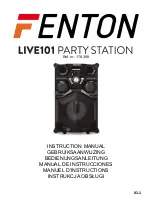
²
7KH'LJLWDO6WRUDJH2VFLOORVFRSH
:KDWWKH'62'RZ
The digital oscilloscope is the essential instrument
used to capture, view and analyze waveforms,
measure signal characteristics and document the
output.
There are three main DS0 categories.
Top-end models with a bandwidth of around
400 MHz or more are the most suitable for R&D-type
work. The 100–200 MHz models are good for
professional and general purposes. And the
sub-100 MHz, low-cost scopes, are useful for work
on low-frequency signals.
%DVLF(OHPHQWV
The way in which each element of the DSO works separately
and in conjunction with the other elements:
Ø
Amplifier — amplifies the input signal so that it can be
measured
Ø
Analog-to-Digital Converter (ADC) — converts the
analog signal into digital form by translating it into a
series of sample points that are then measured and
transformed into digital codes representing the signal
samples
Ø
Acquisition Memory System — stores resulting digital
data
Û
System Memory of up to 64 MB
Summary of Contents for Digital Oscilloscopes
Page 1: ...Hands On Guide to LeCroy Color Digital Oscilloscopes Revision C April 1998 ...
Page 21: ... ...
Page 36: ... HWWLQJ 6WDUWHG Now press the corresponding to select REDEFINE These menus will appear ...
Page 45: ... 0HDVXULQJ 6NLOOV 67 3 Press again The screen will then display ...
Page 49: ... 0HDVXULQJ 6NLOOV The screen will now display ...
Page 74: ... QDORJ 3HUVLVWHQFH The screen will then display 67 3 Press ...
Page 93: ... 0HDVXULQJ 6NLOOV ...
Page 127: ... 0HDVXULQJ 6NLOOV ...
Page 175: ... 0HDVXULQJ 6NLOOV ...
Page 177: ... 0HDVXULQJ 6NLOOV 67 3 Press again to display 67 3 Press and then ...










































